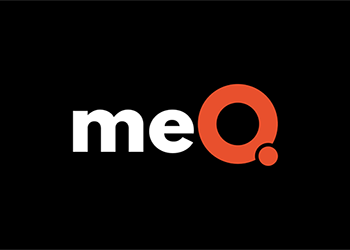This article originally appeared in PR Newswire
NEW YORK, Oct. 4, 2017 /PRNewswire/ — Chasm Partners, a leading executive search firm in the healthcare technology and services space, recently convened an industry roundtable to discuss how employer-focused digital health companies are disrupting the traditional benefits space, as well as how and why employers are actively investing in the long-term health of their team members. The roundtable, which was hosted as part of the firm’s quarterly newsletter, ChasmPOV, included thought leaders from Castlight, Glooko, meQuilibrium, and Zipongo.
According to the National Business Group on Health’s recently released 2018 health care strategy and plan design survey, almost two in five – nearly 40% – of employers are incorporating some “type of value-based benefit design” into their employees’ health plans next year—a trend that Matt Dumas, managing partner at Chasm Partners, has witnessed firsthand.
“In our extensive work with health IT companies, we continue to see major momentum in the employer-focused digital health space,” said Dumas. “A growing number of tech innovators have realized that employers are increasingly eager to consider disruptive digital health solutions that not only improve costs and outcomes for employees, but also improve their overall wellness and productivity.”
Key takeaways from the roundtable included:
The term “benefits” now has much broader implications for employees and employers. “Little is certain about the healthcare market, but one thing remains constant: nearly half of all Americans have employer-sponsored healthcare,” said Mike Leonard, Senior Vice President of Sales and Growth at Castlight. “Ultimately, employers need to find a way to effectively identify, procure, and deploy the right solutions that meet the needs of their employee populations and address the healthcare cost drivers unique to their workforce, rather than one-size-fits-all programs.”
Employers are also looking for ways to help employees stay productive and focused at work. According to Rick Altinger, CEO of Glooko, “Smart employers understand that chronic diseases can dramatically impact absenteeism, productivity, and stress. Digital health solutions are designed to get employees more engaged in their care, to provide ongoing support and ultimately improve their health.”
Jan Bruce, CEO and co-founder of meQuilibrium, emphasized that employers have a new mindset about benefits that expands far beyond cost control. “HR is starting to leverage digital benefits solutions to support engagement and performance. Benefits will increasingly be used to optimize employee potential, to keep good employees and to make those employees more successful and satisfied—not only to safeguard the costs of healthcare and protect the bottom line, but also for growing the topline,” she said.
Jason Langheier, MD, MPH, CEO and founder of Food Benefits Management (FBM) leader, Zipongo, focused on the power that employers, and their platforms have to activate employees into new life changing benefits: “When an employer, it’s digital engagement/wellness platform partner and it’s best practice behavior change and disease management vendors for things like FBM/Nutrition, Resilience and Diabetes effectively activate into the right features, they can create permanent, behavior change that is health and life changing. This leads to sustained cost savings for the employer from lower healthcare spending and lower absenteeism, high productivity and a corporate culture people love.”
Offering solutions is step one. Ensuring adoption and ongoing engagement is imperative to driving results. “To be successful over the next few years, digital health companies must make on-boarding to their platforms easy, fast, and seamless, ensure the platform is engaging and apply data and analytics to personalize solutions in a scalable way,” said Altinger.
Leonard agrees that simply providing new solutions is not enough. “Employers must also drive adoption and engagement with personalized communications, incentives, and other methods. The employers who fully harness the value of digital health solutions will be the ones who make it simple for employees to engage,” he added.
Health plans are still major players—and they are ramping up their commitment to wellness. “Health plans are gearing up to play a much bigger role in aggregating and distributing wellness solutions to employers,” said Langheier. “Historically, early adopters would pick up and test new solutions directly. As the market matures, however, health plans are working to bundle comprehensive offerings, often in collaboration with wellness platforms such as with Castlight and Anthem or United and Rally Health.”
Bruce echoed the sentiments of her fellow roundtable participants. She added, “Regardless of the distribution channel, we are enabling companies to transform the potential of their employees and to use these strategies to gain a competitive advantage in today’s climate of change and volatility—and that’s incredibly important work.”
The full roundtable report is available at: http://chasmpartners.com/placements/future-employer-digital-health-solutions/.
